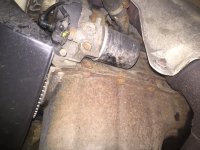Wondering if the level of rust seen on the picture attached is anything to worry about. Rest of the underbody is clean for the most part and I know to expect some surface rust but I'm too much of an amateur to distinguish that from deadly hole prone rust!
Changed my oil last night, just at 99,822 miles and I plan on changing the filter and oil again at around 106,000 (6k miles in between changes). 1.2 Petrol Dynamic.
Attached a picture of my old oil filter which was a pain in the ass to get off btw!

Changed my oil last night, just at 99,822 miles and I plan on changing the filter and oil again at around 106,000 (6k miles in between changes). 1.2 Petrol Dynamic.
Attached a picture of my old oil filter which was a pain in the ass to get off btw!


